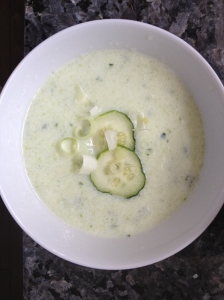Next to my home-grown, round, organic tomatoes, heirloom tomatoes look wild and crazily-shaped. Their sunset reds, dazzling yellows, and deep purple colors, along with striations and ridges, only accentuate their misshapen appearance. However, heirloom tomatoes’ strange form conceals a smooth texture and buttery sweetness. This combination of firmness and balanced acidity makes heirloom tomatoes a favorite in a Caprese salad – the bold flavors pair particularly well with basil vinaigrette. These same qualities make heirloom tomatoes good contenders in pickles and chutneys.

The best time to eat heirloom tomatoes is when they are at their peak during summer. Their flavors are best conserved when the fruits are stored at room temperature. However, as spoilage is quick, cooking the tomatoes into a chutney (with spices, salt and sugar) preserves them. Heirloom tomatoes can now be enjoyed well into fall!
Tomato Chutney
Heirloom tomatoes – 2, chopped
Onion – 1, small, roughly chopped
Ginger – 4-5-inch piece, chopped
Chilies – 7-8, adjust depending on preferred chili heat
Vegetable oil – ½ cup
Salt – 1- 1½ tsp
Sugar – ¼ tsp
- Process all the ingredients in a food processor or in batches in a blender, until you have a smooth mixture.
- Heat oil in a heavy-bottomed cast iron pan.
- Add all the blended ingredients into the pan and stir.
- Bring the mixture to a boil, and then let the mixture simmer for about 30-40 minutes. The mixture should have boiled down and have a creamy texture. Remove from heat and let the chutney cool.
- Once cooled, store the chutney in sterilized mason jars in the refrigerator or freeze.

Tomato chutney, much like pickles, provides the zesty addition to an Indian meal of vegetables and meat served with rice or naan. Tomato chutney can also be used as a spread over cream/goat cheese in a sandwich or used as a dip with sliced, raw vegetables.


You must be logged in to post a comment.